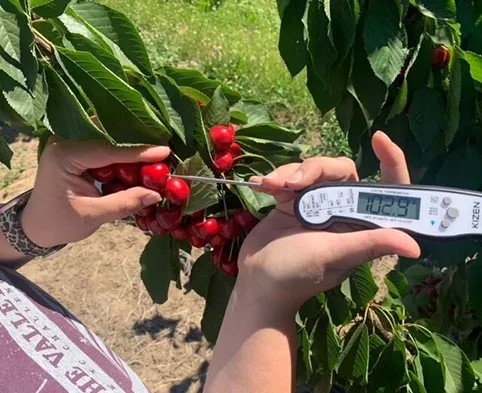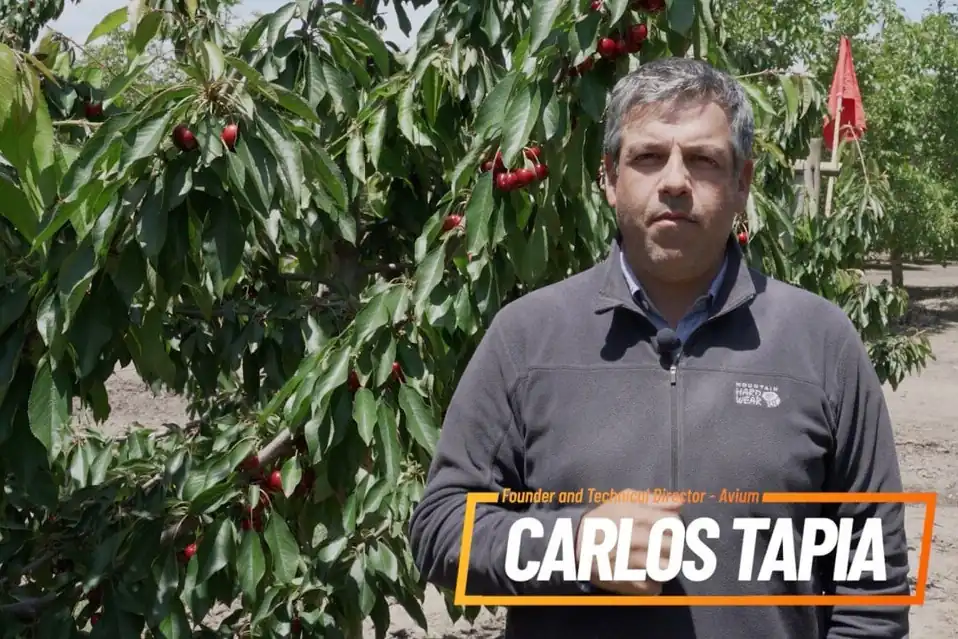There’s plenty that says summer in Door County: a cool bay breeze, crashing waves on a rocky beach, a fiery fish boil, a visit to one of the region’s five state parks. And don’t forget the cherries.
Tart Montmorency cherries have long been synonymous with summertime on the peninsula, dating as far back as the late 1800s. After Swiss immigrant Joseph Zettel experienced success with apple trees, farmers eventually realized Door County’s environment was even better suited for another fruit: cherries.
Shallow, rocky soil that had proven difficult for other agriculture was ideal for cherry trees. And the area’s more temperate climate — with less chance for damage from late spring frost thanks to the effects of Green Bay and Lake Michigan — boded well for the blossoming business.
Early success and boom
Early success brought a boom in cherry trees planted at the turn of the 20th century. Within a decade or two, Door County had gained national recognition for its tart cherry crop.
“By the early 1900s, this region was one of the largest cherry producers in the country, and nearly every family had some connection to the industry, whether working in the orchards, the canneries or selling cherry products,” said Amy Frank, executive director of the Door County Historical Society.
Even the Great Depression couldn’t stop the momentum. Marketing efforts, including a weeklong Cherry Blossom Festival with community parades peninsula-wide, kept visitors coming in droves and the demand for area cherries high.
Ripe for change
By the 1950s, Door County boasted some 700 cherry growers producing 50 million pounds (22,680,000 kg) of the fruit each year, cementing the region’s nickname as Cherryland USA.
Picking all those cherries at the peak of ripeness, usually mid-July to mid-August, required thousands of seasonal workers. And they came in many forms — local teens, Midwest families, migrant workers, even German prisoners of war one year.
“The annual harvest shaped our communities, brought seasonal workers from all over and put Door County on the map as a top cherry-growing region,” Frank said.
The 1960s brought the arrival of the mechanical shaker, eliminating the need for most laborers. Ripe cherries could be quickly shaken from the tree by machine and gathered for processing, with one shaker doing the work of about 400 people picking by hand.
Industry changes
Soon after, the cherry industry began to see growing competition from other areas, most notably Michigan. In the ensuing years, the bulk of U.S. production shifted away from Door County.
Over time, many of the peninsula’s smaller orchards were absorbed into bigger operations, going from hundreds of growers to dozens to now just a handful of commercial orchards. But the Door County cherry tradition endures.
These days, a small number of seasonal and migrant workers still support the cherry harvest, but much is automated — from picking to pitting to packaging. Production has dropped considerably from peak years to about 10-12 million pounds (4,536,000–5,443,000 kg) of cherries annually, most of them Montmorency.
Modern uses and traditions
Use of harvested cherries has evolved, too. In the past, canned cherries perfect for pie filling were the biggest-selling product. Now, dried cherries and juices make up the bulk of usage.
“The industry has changed over the years,” Frank said, “but the connection people feel to Door County cherries hasn’t.”
Festivities may be more muted; there’s just a one-day Cherry Fest each summer in Jacksonport, for example. But cherries remain a big part of what makes Door County special, Frank noted.
“Many orchards have been in the same families for generations, and you can still find people heading out to pick their own every summer,” she said. “Local businesses take pride in using cherries in everything from pies and jams to wine and beer.”
Symbol of heritage
Stopping for a slice of cherry pie is a favorite activity in the region, Frank added, and seeing the cherry blossoms in spring is “one of the most breathtaking sights in Door County.”
Even in winter, cherries can top the list for fun. Every Dec. 31 in Sister Bay, for example, the dropping of a “giant sparkling cherry” welcomes the new year.
In any season, such activities are a reminder of “just how special this tradition is to our community and visitors alike,” Frank said. “Cherries are more than just a crop here, they’re a symbol of our heritage.”
Source: issuu.com
Image source: Wisconsin Natural Resources
Andrea Zani
editor-in-chief of Wisconsin Natural Resources magazine
Cherry Times - All rights reserved












